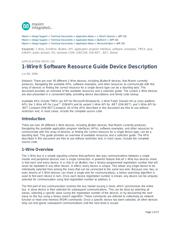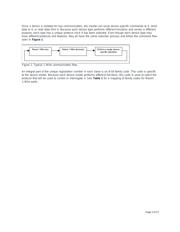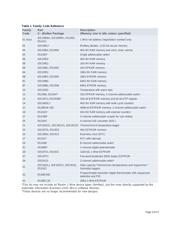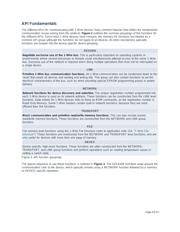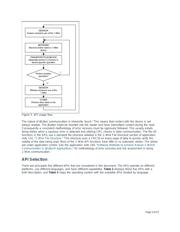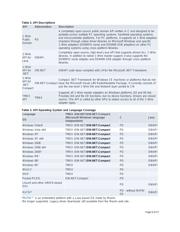Datasheet 搜索 > EPROM芯片 > Maxim Integrated(美信) > DS2502-E48+ 数据手册 > DS2502-E48+ 产品设计参考手册 1/27 页
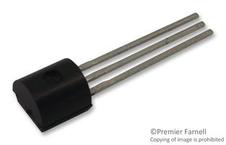
¥ 20.542
DS2502-E48+ 产品设计参考手册 - Maxim Integrated(美信)
制造商:
Maxim Integrated(美信)
分类:
EPROM芯片
封装:
TO-92-3
描述:
iButton 装置### 1线和 iButtoniButton 是封装在直径为 17mm 的不锈钢罐中的计算机芯片。 由于这种独特且耐用的容器,最新信息可以跟随人或物体到任何地方。 它可以安装到任何地方,因为它足够坚固抵受各种室内或室外的恶劣环境。 它小巧而便携,可以附着于钥匙链、戒指、手表或其他个人物品上。 它用于诸如建筑和计算机的出入控制、资产管理以及各种数据记录任务的日常应用。
Pictures:
3D模型
符号图
焊盘图
引脚图
产品图
页面导航:
应用领域在P5
导航目录
DS2502-E48+数据手册
Page:
of 27 Go
若手册格式错乱,请下载阅览PDF原文件

Maxim > Design Support > Technical Documents > Application Notes > 1-Wire® Devices > APP 155
Maxim > Design Support > Technical Documents > Application Notes > i
Button® > APP 155
Maxim > Design Support > Technical Documents > Application Notes > Microcontrollers > APP 155
Keywords: 1-Wire, OneWire, iButton, API, application program interface, software, examples, TMEX, java,
OWAPI, public domain, PD, windows COM, OWCOM, OW.NET, .NET, dotnet
APPLICATION NOTE 155
1-Wire® Software Resource Guide Device Description
Jul 08, 2008
Abstract:
There
are over 30 different 1-Wire devices, including i
Button® devices, that Maxim currently
produces. Navigating the available APIs, software examples, and other resources to communicate with this
array of devices or finding the correct resource for a single device type can be a daunting task. This
document provides an overview of the available resources and a selection guide. The current 1-Wire devices
are also presented in a convenient table, providing device descriptions and family code lookup.
Available APIs include TMEX (an API for Microsoft Windows®), 1-Wire Public Domain Kit (a cross-platform
API), the 1-Wire API for Java™ (OWAPI) and its variant 1-Wire API for .NET (OW.NET), and 1-Wire API for
.NET Compact (OW.NET.Compact). All of the APIs described in this document are free to use without
restriction and, in most cases, include the complete source code.
Introduction
There are over 30 different 1-Wire devices, including iButton devices, that Maxim currently produces.
Navigating the available application program interfaces (APIs), software examples, and other resources to
communicate with this array of devices, or finding the correct resource for a single device type, can be a
daunting task. This guide provides an overview of available resources and a selection guide. The APIs
described in this document are free to use without restriction and, in most cases, include the complete
source code.
1-Wire Overview
The 1-Wire bus is a simple signaling scheme that performs two-way communications between a single
master and peripheral devices over a single connection. A powerful feature that all 1-Wire bus devices share
is that each and every device, in a chip or an i
Button, has a factory-programmed registration number that will
never be repeated in any other device. In effect, every device is unique. This allows any single device to be
individually selected from among the many that can be connected to the same bus wire. Because one, two, or
even dozens of 1-Wire devices can share a single wire for communications, a binary searching algorithm is
used to find each device in turn. Once each device registration number is known, any device can be uniquely
selected for communication using that registration number to address it.
The first part of any communication involves the bus master issuing a reset, which synchronizes the entire
bus. A slave device is then selected for subsequent communications. This can be done by selecting all
slaves, selecting a specific slave (using the registration number of the device), or by discovering the next
slave on the bus using a binary search algorithm. These commands are referred to collectively as network
function or read-only-memory (ROM) commands. Once a specific device has been selected, all other devices
drop out and ignore subsequent communications until the next reset is issued.
Page 1 of 27
器件 Datasheet 文档搜索
AiEMA 数据库涵盖高达 72,405,303 个元件的数据手册,每天更新 5,000 多个 PDF 文件

